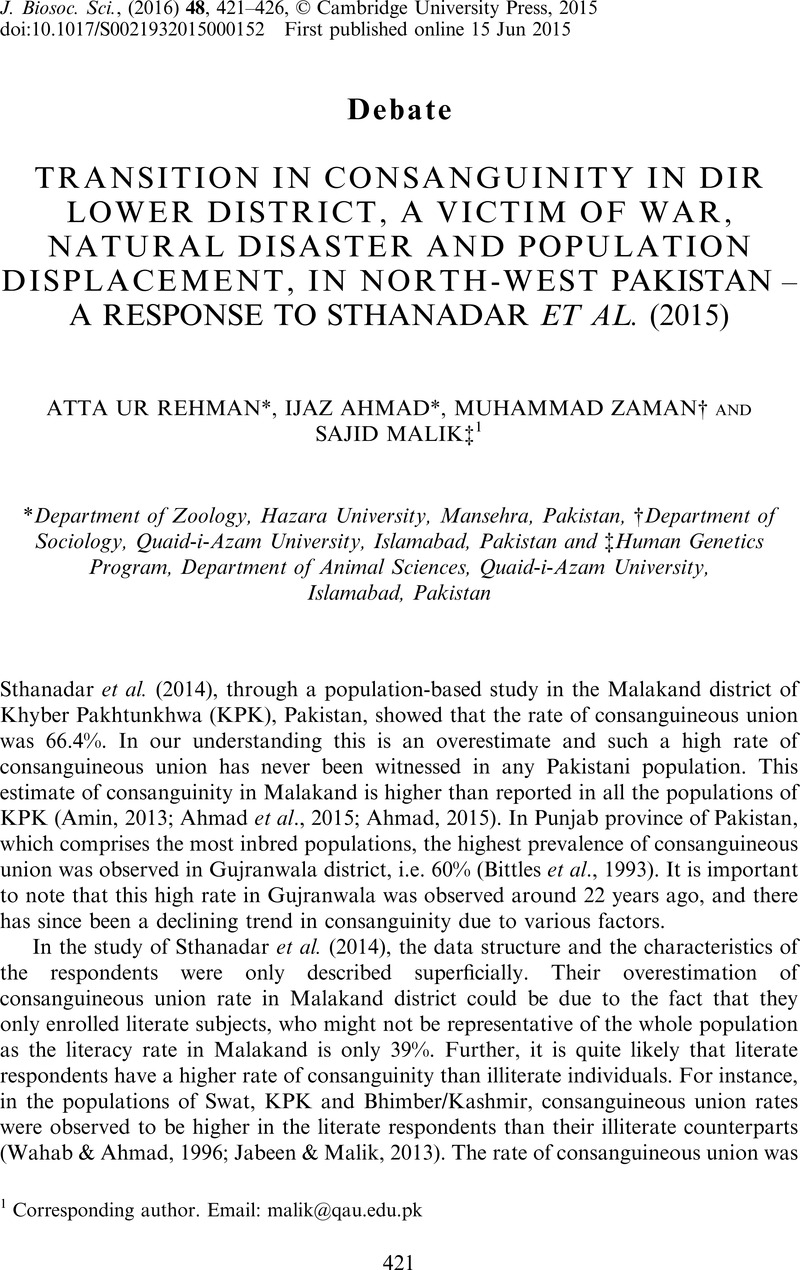Crossref Citations
This article has been cited by the following publications. This list is generated based on data provided by Crossref.
Khan, Jehanzeb
Rashid, Abdur
Khan, Khalid
Malik, Sajid
and
Rehman, Atta Ur
2016.
Distribution ofABOandRh(D)Allelic Polymorphisms North Waziristan Agency, (Federally Administered Tribal Areas), Pakistan.
The Anthropologist,
Vol. 23,
Issue. 3,
p.
423.
Ur Rehman, Atta
Peter, Virginie G.
Quinodoz, Mathieu
Rashid, Abdur
Khan, Syed Akhtar
Superti-Furga, Andrea
and
Rivolta, Carlo
2019.
Exploring the Genetic Landscape of Retinal Diseases in North-Western Pakistan Reveals a High Degree of Autozygosity and a Prevalent Founder Mutation in ABCA4.
Genes,
Vol. 11,
Issue. 1,
p.
12.
Naeem, Muhammad
Ahmad, Bashir
and
Malik, Sajid
2022.
Burden of congenital and hereditary anomalies in the war-affected territory at Pakistan–Afghanistan border.
Asian Biomedicine,
Vol. 16,
Issue. 6,
p.
299.
Munir, Asad
Afsar, Salma
and
Rehman, Atta Ur
2024.
A systematic review of inherited retinal dystrophies in Pakistan: updates from 1999 to April 2023.
BMC Ophthalmology,
Vol. 24,
Issue. 1,
Malik, Sajid
Bibi, Anisa
Farid, Rubbiya
Khan, Sidra
Awan, Javaid
and
Rehman, Atta Ur
2024.
Consanguinity in northwest Pakistan: evidence of temporal decline.
Journal of Biosocial Science,
p.
1.





